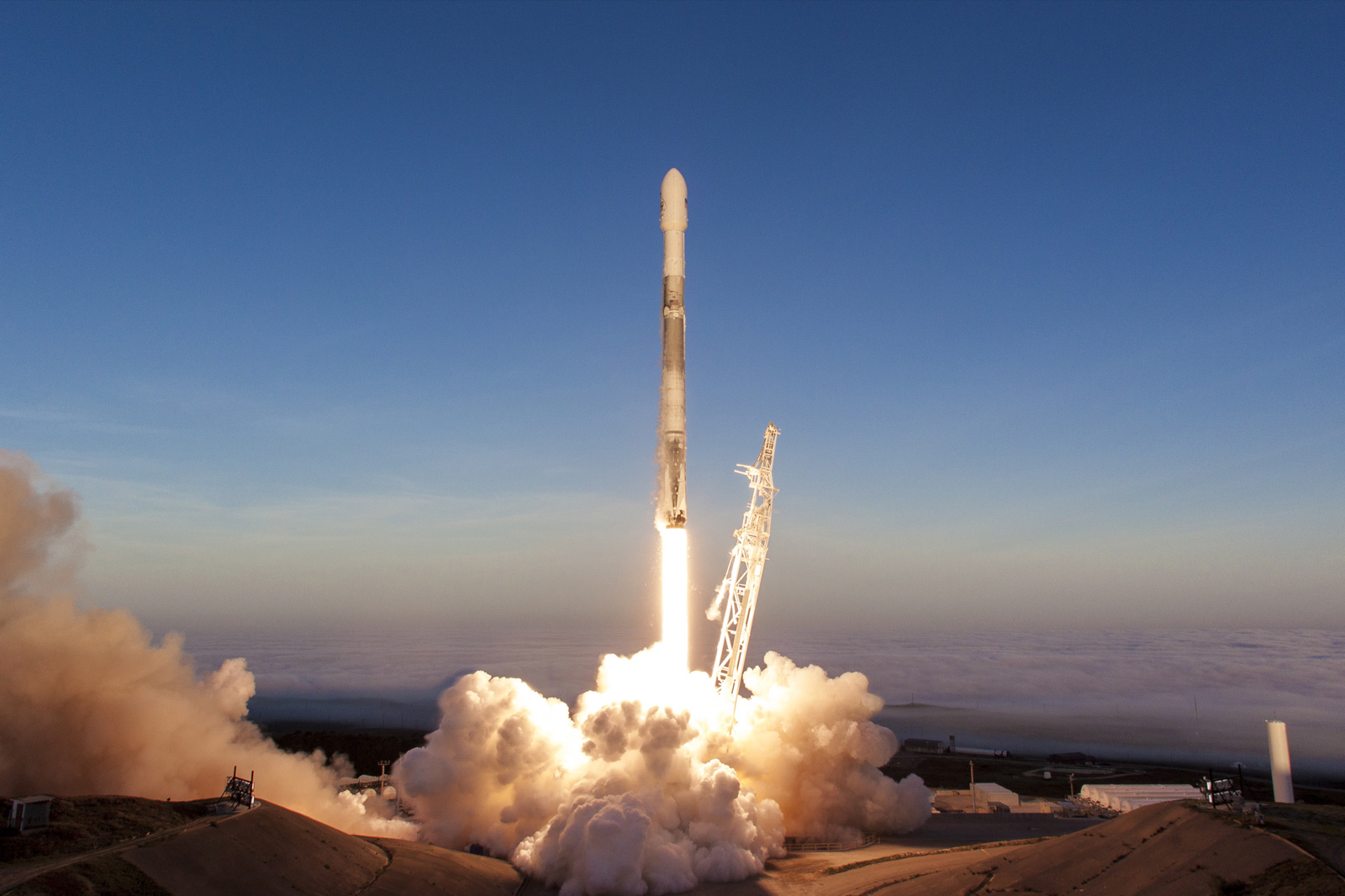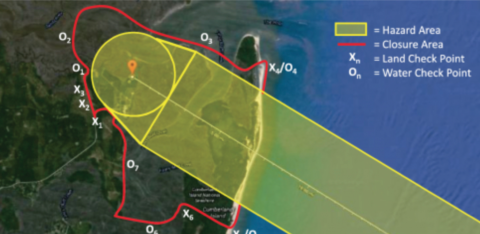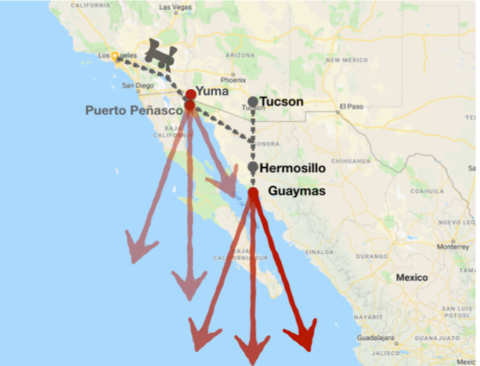After decades of failed promises and false starts, we finally have a thriving space launch industry emerging from new and traditional players in the United States and abroad. Multiple satellite operators—including Google, SpaceX, Amazon, Iridium, and more—have the financial wherewithal to develop constellations of hundreds or thousands of small satellites in low Earth orbit. Traditional launch vehicle suppliers like United Launch Alliance (a joint venture of Boeing and Lockheed Martin) and OrbitalATK (recemtly acquired by Northrop Grumman) are increasing their operational tempo while bringing new launch vehicles online. And innovative “NewSpace” launch companies seem to be emerging daily—from behemoths like SpaceX and Blue Origin (Jeff Bezos) to venture-funded startups like RocketLab/Electron, Firefly, and Relativity Space.

In contrast to NASA’s historic model of a single booster (Saturn, then Shuttle, now SLS) to carry all payloads, we are seeing an evolutionary explosion of different booster sizes to serve different payloads, orbits, and missions. SpaceX and Blue Origin have staked out the large-booster territory, with huge rockets demonstrated or under development that are comparable to the Saturn V which sent astronauts to the Moon. At the other end, multiple companies are vying to dominate an emerging market for small, low-cost, quick-turnaround launchers that can serve commercial or scientific payloads of tens to hundreds of kilograms for costs far below that of traditional suppliers, while offering agile responsiveness that cannot be matched by large boosters.
Orbital Launch Requirements
Satellite orbits are described by altitude, inclination, and circularity. Low Earth Orbit (LEO) starts at the fringes of the stratosphere—approximately 150 km high—and ranges up to approximately 2000 kilometers. Geosynchronous orbit, used for large comsats, is at an altitude of 36,000 km. Most of the satellite constellations being proposed will operate in LEO.
The inclination of a satellite’s orbit is tightly connected to the ground location of its launch site. Equatorial orbits (inclination 0°) benefit from being launched as close to the Equator as possible; if launched from locations north or south of the Equator, the spacecraft will have to burn propellant to adjust the plane of its orbit to the equator. This is why the International Space Station is at a highly-inclined orbit of 51.6°, to make it easily accessible from Russian launch facilities in Kazakhstan.
For Earth surveillance satellites, it is frequently desirable to operate in polar (inclination 90°) or near-polar orbits. In a polar orbit, a satellite will pass over the entire surface of the Earth during the course of several orbits; ideal for telecomm coverage. Sun-synchronous orbits (inclination of approximately 80°, depending on altitude) are of interest to imaging companies: the same spot on Earth can be repeatedly photographed with the Sun at identical angle, minimizing distortion due to shadows, while only sacrificing coverage of relatively small and uninteresting territories near the poles.
Rocket launches are noisy at the best of times, and occasionally dangerous. They need to take place in relatively isolated locations. And to protect the uninvolved public, it’s best to take off over open ocean, to minimize risk from jettisoned first-stage boosters, or from falling debris in the event of a launch failure.
The FAA enforces restrictions on launch capability based on avoiding harm to the general public. (Fundamentally, that’s why you want to launch over water… the probability of a piece of your booster falling on someone’s head in the open ocean is vanishingly small compared to launching over populated areas.)

For equatorial or shallow-inclination orbits launched from the Western Hemisphere, the best locations are on the eastern coasts of North and South America, allowing jettisoned stages or debris to fall harmlessly into the Atlantic Ocean. (Launching to the east takes advantage of the rotation of the Earth, reducing the amount of propellant required to get to orbit.) Thus, NASA has traditionally launched its orbital missions from Cape Canaveral, Florida, with smaller rockets sometimes launched from Wallops Island on the Virginia coast. There are currently developments underway to add another coastal spaceport in Camden County, Georgia. The European Space Agency launches eastward out of French Guiana (benefitting from its near-equatorial geography).

Polar and sun-synchronous orbits are more difficult. Latitude is less important, but the launch site needs to have a stretch of ocean downrange to the north or south. There are currently very few polar launch facilities in the Western Hemisphere. Traditionally, the USA has launched polar or near-polar satellites from Vandenberg Air Force Base in California, with limited launches of smaller boosters from Kodiak Launch Complex in Alaska or Kwajalein Island in the North Pacific.

The Smallsat Revolution
If you only need to launch a dozen or so satellites per year, this isn’t really a problem. But suddenly we’re hearing about satellite operators applying for licenses to launch hundreds, thousands, or even tens of thousands of satellites in “megaconstellations.” What happened?
Moore’s Law.
Miniaturization has gotten to the point that it’s possible to build usefully-functioning satellites that you can lift with one hand. Of course, there are tradeoffs. Big satellites can have big antennas. If you want to have a small satellite with a small antenna, you can’t transmit and receive signals as far. Which means you want to be in a low orbit only a few hundred kilometers up, not the “Clarke Orbit” at 36,000 km where large comsats live.
And you may want to build your satellite with cheap cellphone-quality components rather than specialized space-qualified parts. Which brings down the cost dramatically, but probably means your satellite will fail faster in the harsh thermal and radiation environment of space… dying in months or a few years, rather than decades. That only makes sense if you can launch replacement satellites frequently and cheaply.
The flip side? These new satellites are tiny. You can literally build hundreds or thousands of them for the cost of a traditional large comsat.

Need for New Polar Launch Facilities
Multiple players are planning to capitalize on the smallsat revolution by launching fleets of smallsats for communications and for Earth observation. As explained above, those satellites need to be in polar or near-polar orbits. The need for new polar launch facilities has been becoming more urgent for years.
Vandenberg, Kodiak, and Kwajalein are all military bases, launching through military-controlled airspace, and have substantial operational penalties due to the need to coordinate with military operations. Historically, operations at any of these sites impose delays of months or sometimes years between commercial launches. (Friends of mine have personal experience with orbital launches from Kwajalein, and are not considering that site… like Kodiak, it has all of the drawbacks of Vandenberg, plus a long ocean voyage to get there, with the unique added bonus of an occasional typhoon.)
Currently, the Indian Space Research Operation is capitalizing on the requirement by promoting launches from the Satish Dhawan Space Centre in Andhra Pradesh, which supports polar trajectories over the Indian Ocean. There are obvious legal and logistical difficulties in transporting US-made satellites to India; in addition, the ISRO prefers to launch using their own PSLV (Polar Satellite Launch Vehicle), discouraging satellite operators from choosing other boosters.
There are two polar-orbit launch sites being developed in the Western Hemisphere: one in Hawaii and one in Nova Scotia. Neither is currently operational (a launch was attempted from the Hawaii facility in 2015, but failed). Both are geographically unattractive—Hawaii due to its island location, and Nova Scotia due to its remoteness and winter weather conditions.
SpaceX has conducted multiple polar launches out of Vandenberg AFB. Last summer, SpaceX began offering “ride-share” flights, charging $1 million to launch a 200 kilogram satellite. This is dramatically lower than historical prices, and this pricing caused a great deal of consternation in the small-launcher market. Many people immediately assumed that SpaceX would wipe out the burgeoning market for smaller rocket launchers.
But ride-sharing has its limitations. Fundamentally, it’s equivalent to taking the bus rather than driving your own car. You don’t get to decide the route, or the schedule, or who you ride with. It’s very cost-effective when the bus is going where you want to go, when you want to go there. And if cost is an overriding concern, you may choose to ride the bus even if it means a long walk to or from the bus stop. But millions of people decide to drive their cars every day because they value their convenience, flexibility, and privacy enough to pay the higher cost-per-mile.
If you are launching dozens or hundreds of small satellites, combining them into a ride-share or even a dedicated large launch makes sense. We’ve seen this most recently with SpaceX’s launches of its own StarLink satellites, with 60 satellites densely packed into each Falcon 9 launch.

But what if you only need to launch one or two satellites? Maybe you’re not building a megaconstellation. Or maybe you are, but one of the satellites has failed on-orbit and needs to be replaced. Or perhaps you’re a military commander, and you need a satellite in a particular orbit right now, and not whenever the next bus is scheduled to leave.
(I have to tip my hat here to Dale Brown, who popularized the concept of small, responsive “Need It Right This Second” NIRTSats in his military thrillers as far back as 1992!)
Over the last few years, I have had a number of conversations with rocket and satellite companies about dedicated launches, shared launches, and the demand for spaceports. Even with the cost advantage of ride-sharing, they seem to agree there’s a market for “several hundred” flexible launches of small satellites per year… and “over half” of them require polar orbits.
If you’re in one of these situations, and you call up Vandenberg or Kodiak, you’re in for a long wait. Military launches get first priority, and civilian launch windows are likely booked out months or years in advance. What you want is a civilian launch location, facing north or south over an ocean, with easy access to rail lines and a well-trained aerospace workforce. And it’d be nice if you weren’t in a hurricane zone.
There is no suitable oceanfront property in the United States—but there are attractive potential sites just over the Mexican border in Sonora.
From the Sonora Desert to the Stars
Arizona is landlocked… but the Sea of Cortez runs north-south. And it gets very close to U.S. soil — only 40 miles near Yuma, just over the border from Rocky Point / Puerto Peñasco.

There is direct rail access from Tucson through Nogales to Guaymas on the Sea of Cortez. A site near Guaymas could access sun-synchronous orbits with minimal plane-change maneuvering. Polar launches (90° south) would have almost 300 kilometers of unimpeded ocean before briefly passing over a sparsely populated area of Baja California. Locating a spaceport near Guaymas would also benefit from proximity to Mexico’s rapidly-growing national aerospace cluster in Hermosillo.
Alternatively, a site near Yuma/Puerto Peñasco could launch due south without overflying any substantial populated regions (taking advantage of Baja’s Valle de los Cirios and Vizcaíno Biosphere Reserve). This region is also accessible by rail from both Arizona and California, connecting it to the enormous Southern California aerospace manufacturing ecosystem. It would have the major advantage of launching from US soil (eliminating time-consuming export paperwork for the launch operator and the payload clients). Southbound launches would exit US airspace within seconds, so would need close coordination with Mexican authorities to ensure safe operation in Mexican airspace and to minimize the risk to the Mexican public on the ground.
In both cases, a Sonoran spaceport would provide US rocket manufacturers with a secure rail-accessible polar launch facility, with excellent year-round weather and a well-trained workforce. Small- to medium-sized rocket launches from Arizona or Sonora are not going to put SpaceX or ULA out of business, but they can supply a critical piece of the overall launch puzzle.
Obtaining launch licenses for a spaceport can take months or years… far more time than is required to actually pour the concrete. And if we launch from Mexican soil, international coordination will probably add more months of delay. The best time to start this process would have been two years ago. The next best time is now.
Image credits
Rocket launch: SpaceX
Starlink photo: Marco Langbroek
FAA site restrictions: Spaceport Camden
As an point of clarification, the Pacific Spaceport Complex – Alaska (PSCA) on Kodiak Island is not a military base nor does it use military airspace. In fact, Kodiak is the only FAA-licensed commercial vertical orbital spaceport not co-located on a federal range. I agree with the author that operations on federal ranges for commercial customers can be challenging and complex. As a multi-user spaceport, PSCA’s commercial customers enjoy equal access with government customers and with 6 launch pads and two command centers, the spaceport has ample availability to accommodate concurrent operations. We need more vertical commercial spaceports not co-located on federal ranges, so I wish the Sonoran Desert Spaceport all the best for a successful future.
Hi. Your information about the Pacific Spaceport Complex-Alaska (PSCA) on Kodiak Island is absolutely incorrect. First, PSCA on Kodiak is NOT a military installation. In fact, it is only vertical launch site not on Federal property. It is operated as a for-profit corporation, with all funding coming from commercial sales to private firms or the government. And Kodiak is easy to reach. In addition, Alaska Aerospace can launch in as little as 90 days notice, with the only lag being that done for licensing by the FAA through their DC offices. PSCA on Kodiak is a private launch site, with more rapid launch capability than any spaceport, private or government, in the US. I do not know where you get your information, but it is not from either Alaska Aerospace Corporation or the FAA.